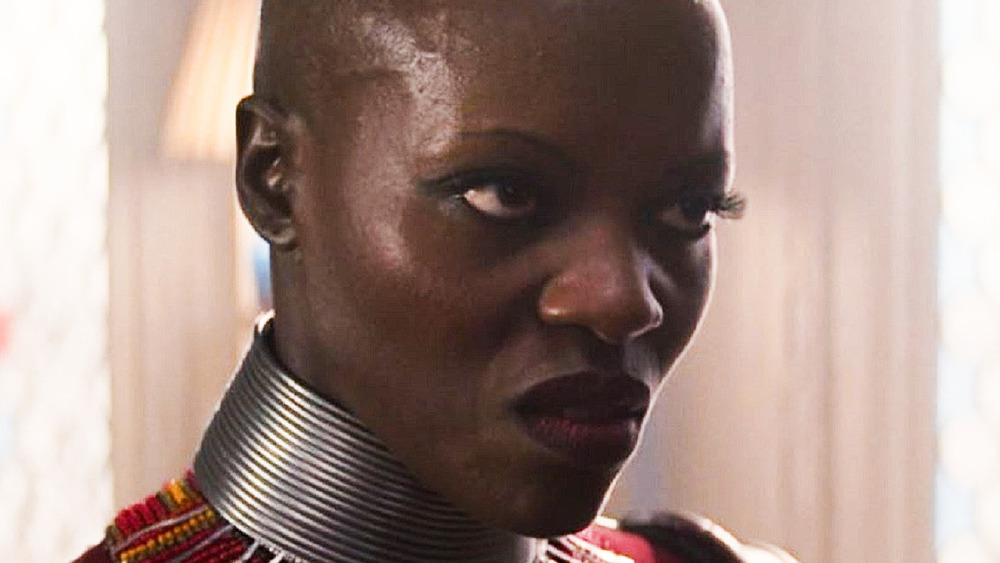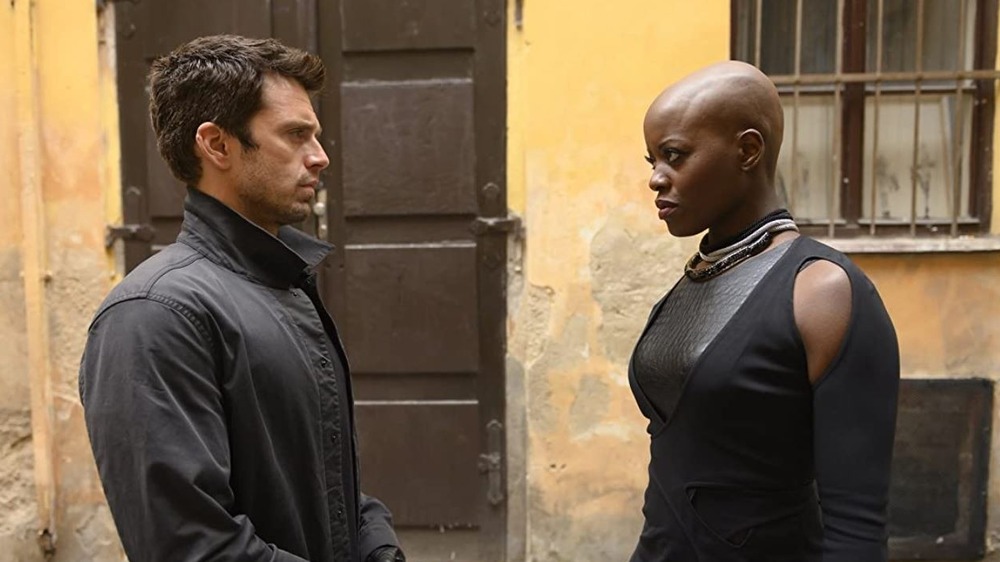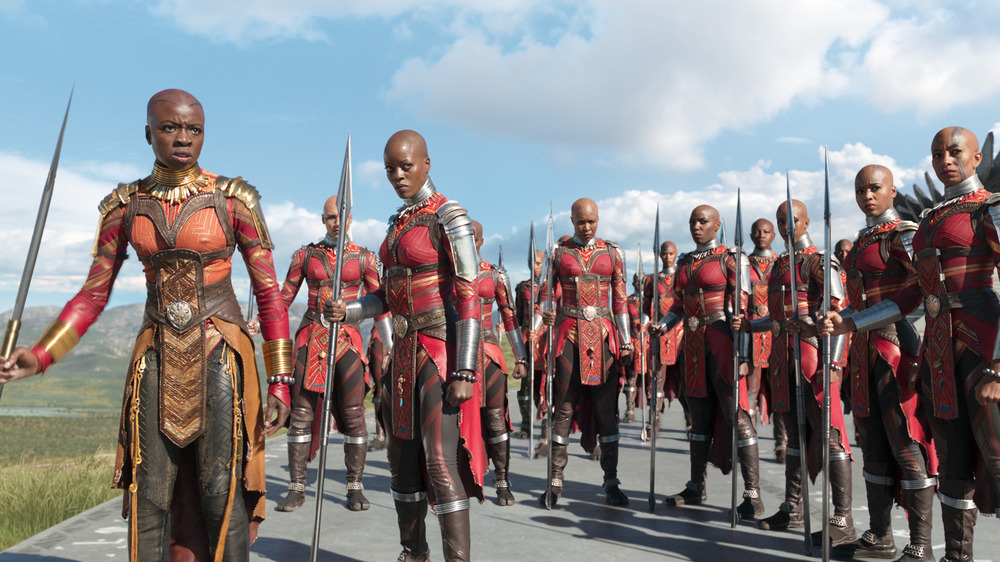Marvel's Dora Milaje: The Real-Life Inspiration You May Not Know
Contains spoilers for The Falcon and the Winter Soldier
Wakanda's elite fighting force, the Dora Milaje, enters The Falcon and the Winter Soldier with a bang at the end of episode 3, when the group's second-in-command Ayo (Florence Kasumba) confronts Bucky Barnes (Sebastian Stan) about his decision to free king-killing supervillain and dancer extraordinaire Baron Helmut Zemo (Daniel Brühl) from prison. In episode 4 of the miniseries, Wakanda comes calling after the eight-hour time window Ayo promised Bucky expires — at which point she quite literally disarms him and the Dora Milaje teach John "Captain America" Walker (Wyatt Russell) a short, sharp lesson in close combat.
This impressive display of fighting prowess is, of course, just one of the many, many impressive feats the Dora Milaje have shown throughout their tenure in the Marvel Cinematic Universe. They've fought against alien threats alongside the Avengers, and fearlessly stood beside King T'Challa (Chadwick Boseman) against Erik Killmonger (Michael B. Jordan). As such, it's easy to think that much like the significantly more super-powered heroes in these movies, these capable, intense bodyguard-warriors are way too awesome exist outside the MCU (and, of course, the comics). However, it turns out that these highly trained female warriors are actually rooted in the real world.
Let's take a look at the real-life inspiration behind the MCU's Dora Milaje.
The Dora Milaje are inspired by the real-life "Dahomey Amazons"
As Time reports, the Dora Milaje entered the Marvel Comics pantheon in 1998, courtesy of writer Christopher Priest, but they do actually have plenty of historical precedent. It's said that the Dora Milaje's "elite group of female soldiers" concept was likely inspired by a similar real-life fighting force in the West African country of Dahomey, now known as Benin. The country's tradition of all-female troops started in the 17th or 18th century, and though they disappeared from the battlefield in the late 19th century, Smithsonian Magazine notes that the last of these powerful warriors may have died as late as 1978.
Experts disagree on the exact origin of the so-described "Dahomey Amazons." They may have started out as wives of the country's king, or were just technically married to him as part of the job description. Their origin might have something to do with the area's gbeto hunters, who were female and so hardcore that they could take down elephants. Regardless of their origin story, these warriors were constantly guarding the King of Dahomey — and they weren't just women with cool uniforms and little capacity for actual warfare. They were members of the military with extensive training, and they numbered in the thousands, according to Smithsonian Magazine.
The Dahomey women became known as determined warriors who were exceptional hand-to-hand fighters. They weren't afraid of death, and were actually exposed to pain and ruthless killing as part of their training: There are stories of the Dahomey women throwing prisoners of war to their deaths as a way of numbing to such matters. The end result was a group of efficient and fearsome warriors who gained many victories on the battlefield. Even members of the French Foreign Legion sang their praises, as Smithsonian Magazine points out.
The Dora Milaje have come far from their initial comic book appearance
Pretty much every MCU character who comes across the Dora Milaje tends to garner an immediate respect for them. While their original comic book incarnation was also rather fearsome, The Hollywood Reporter notes that they've come a long way since their comic book debut in 1998. The comics version of Everett Ross (played in the MCU by Martin Freeman) labeled the Dora Milaje as "deadly Amazonian high school karate chicks," and though they were already quite powerful, they were largely expendable background characters. This version of the Dora Milaje wore their hair longer than the MCU Dora Milaje tend to, and technically served double duty as bodyguards and potential brides to the king. Funnily enough, the comic book version of T'Challa was fairly happy to hand-wave this — as opposed to the MCU version, whose romantic interest Nakia (Lupita Nyong'o) is famously a former Dora Milaje.
The group's profile truly rose in 2016, with Ta-Nehisi Coates and Brian Stelfreze's take on Black Panther. They established the Dora Milaje in the comics as a formidable power in Wakanda — as fighters, heroes, and downright interesting characters in general. By the looks of it, the MCU seems intent to follow this path as well, with Ayo's group dominating their opponents in The Falcon and the Winter Soldier and with Black Panther 2 looming on the horizon. Who knows what adventures await the Dora Milaje in the future?


